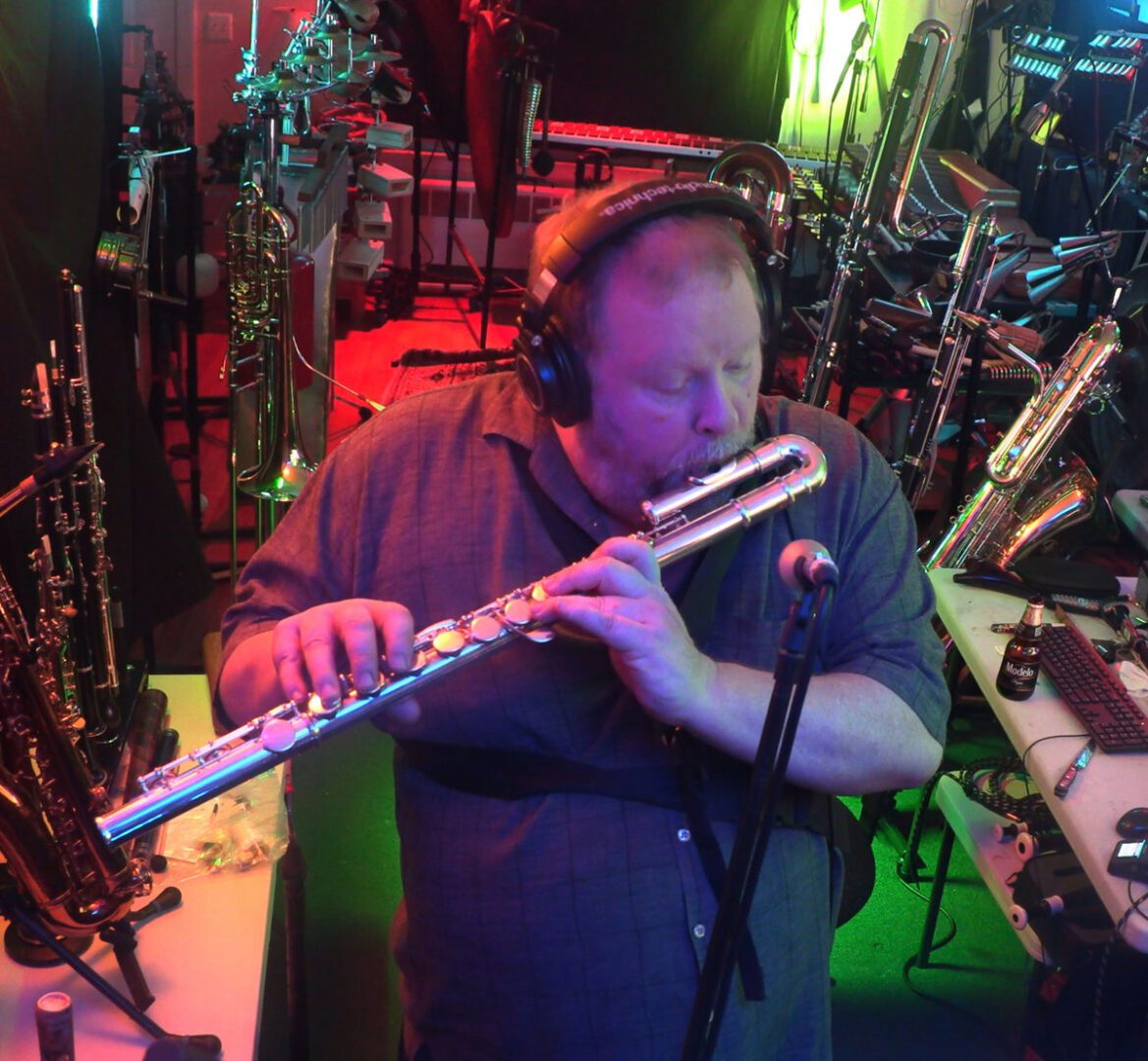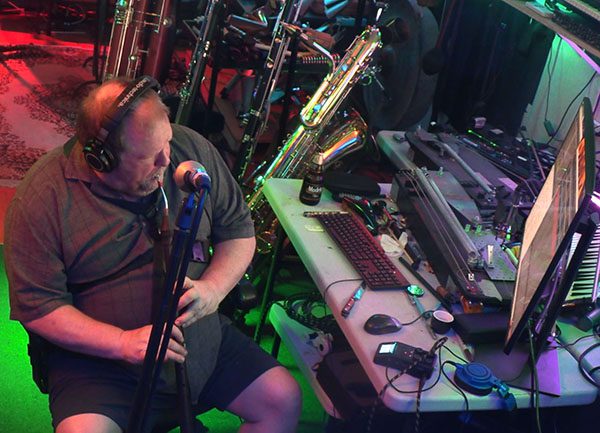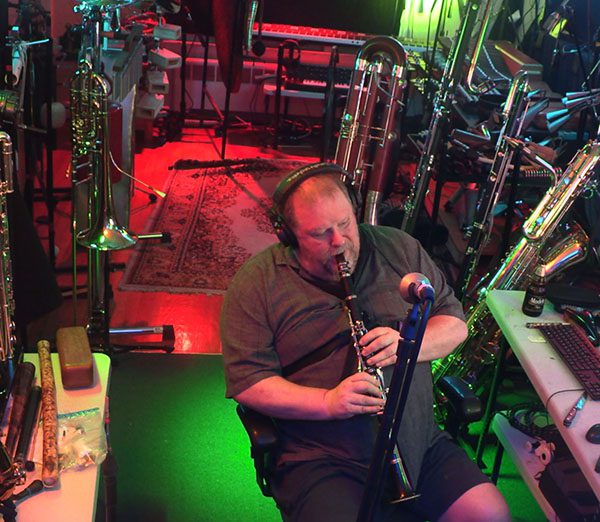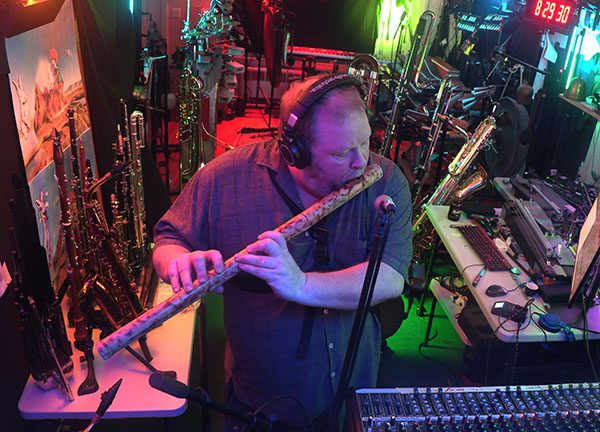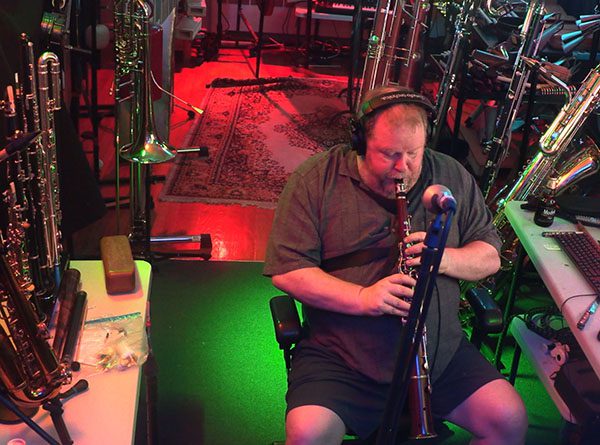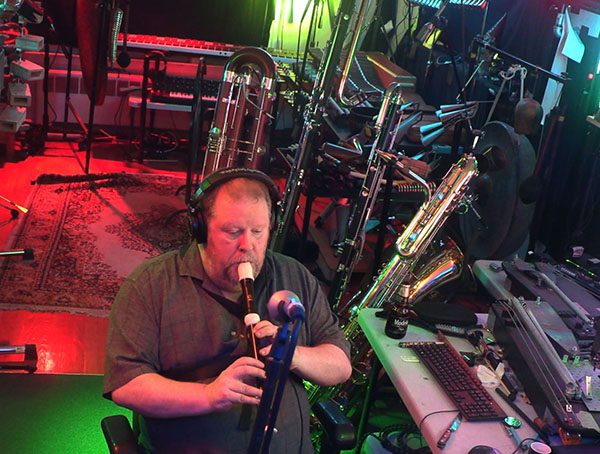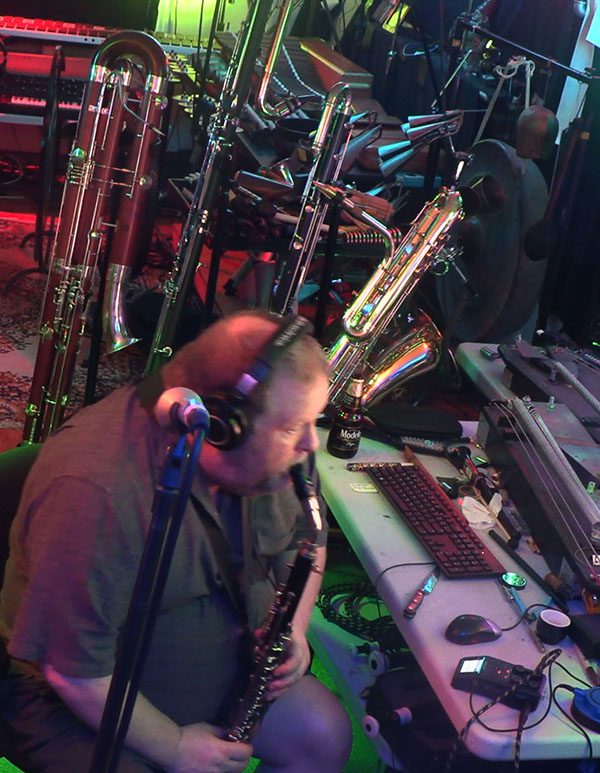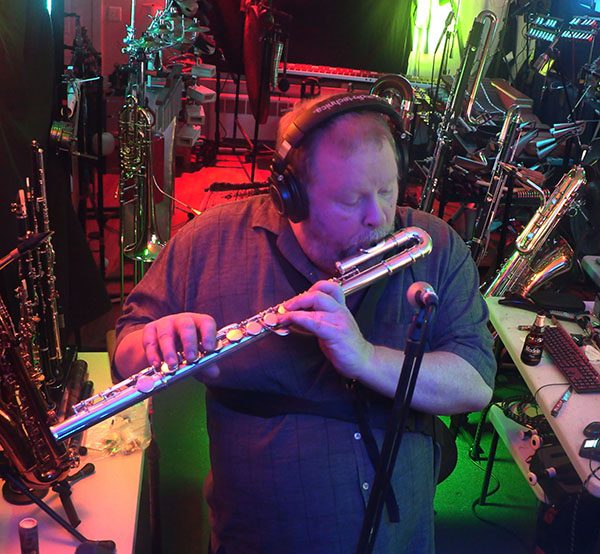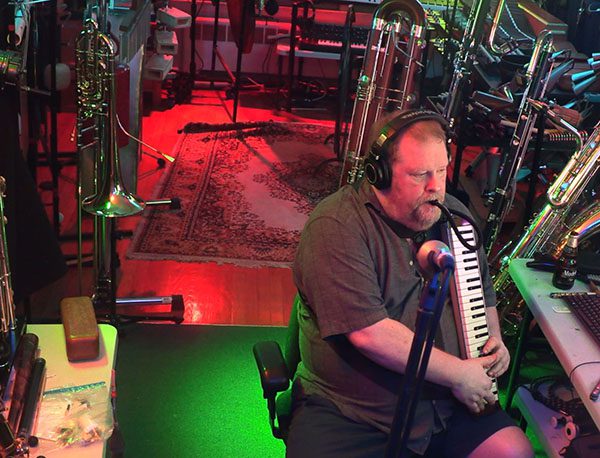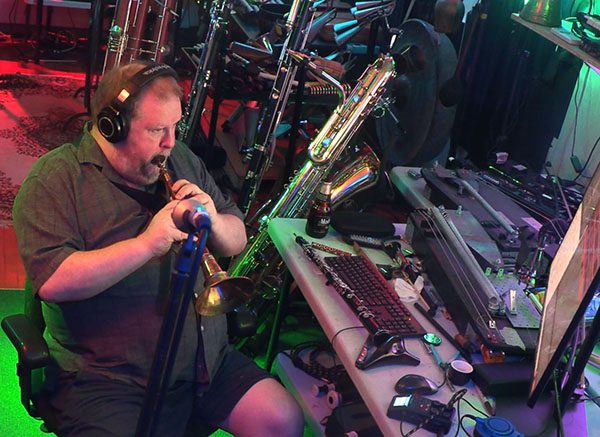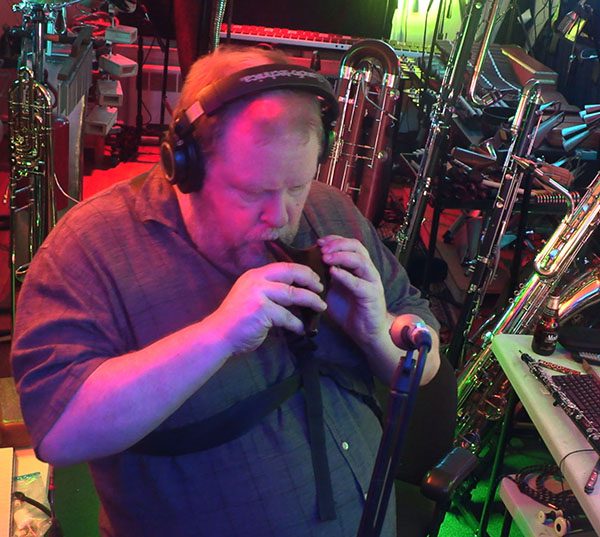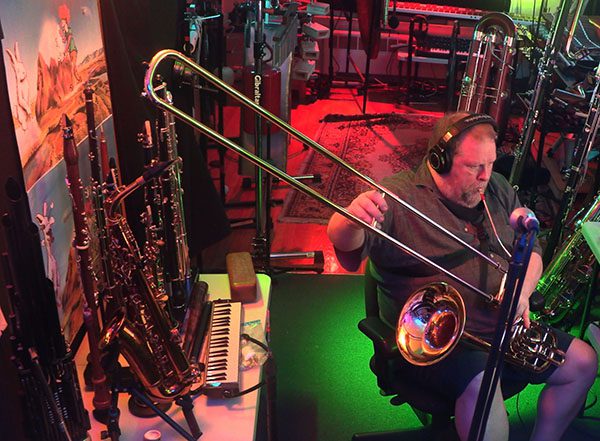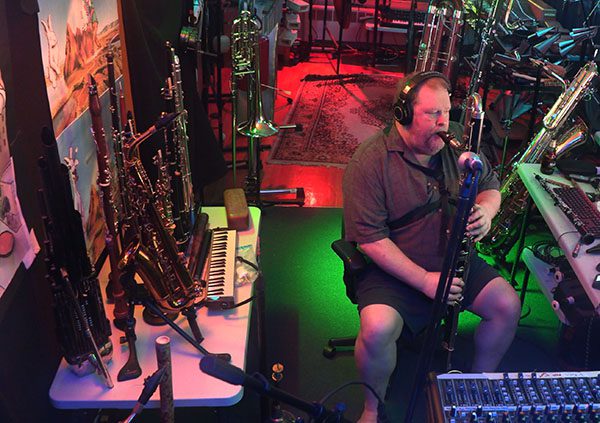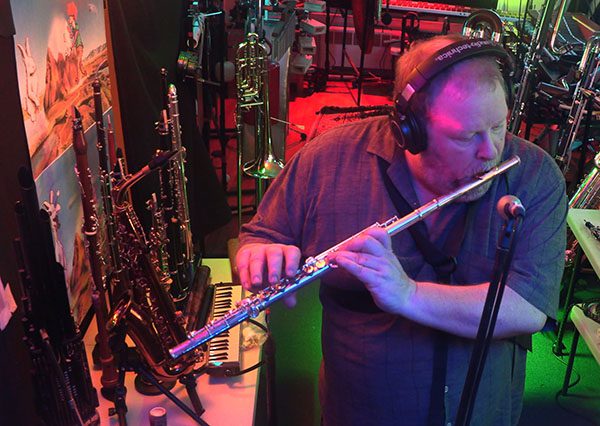PEK Solo – A Quartet of PEKS
The Strange Theory of Light & Matter
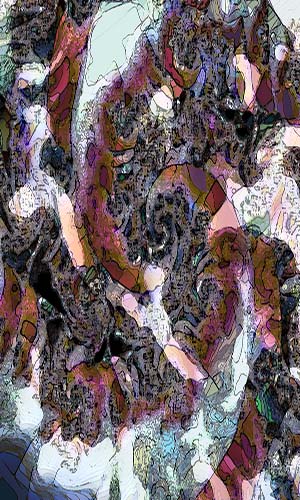
Excerpt from Lee Rice Epstein Review
“… Truly, listening to this is not unlike some classic AACM woodwinds recordings, like Roscoe Mitchell’s “Nonaah” quartet with Joseph Jarman, Henry Theadgill, and Wallace McMillan; Anthony Braxton’s “Composition 76” recorded with Threadgill and Douglas Ewart, and again with Mitchell and Jarman; and even Threadgill’s X-75 ensemble, with Ewart, Jarman, and McMillan (plus four basses and vocals). Similar to these other compositions, “The Strange Theory of Light & Matter” displays its own internal logic structure, with sets of material bent through layers of improvised (re-) interpretation…”
Lee Rice Epstein, FreeJazzBlog
Excerpt from Bruce Lee Gallanter Review
“… Right from the first note, PEK is layering several reeds and double reeds together. I really like the way the clarinets (bass, b-flat & contrabass) clarinets sound together as PEK weaves his lines around one another in complex, twisted harmonies. PEK does a fine job of stretching out lines, bending certain notes, adding & subtracting different parts or layers as he goes… Yet another impressive undertaking by the ever-resourceful Mr. PEK”
Bruce Lee Gallanter, Downtown Music Gallery

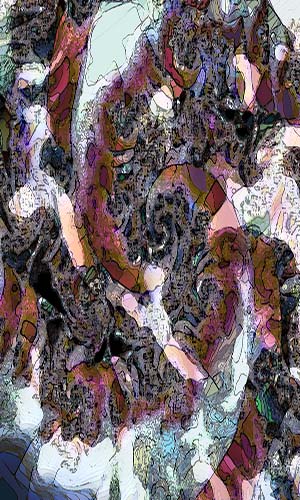
Four times David Peck, as the Boston reedist and multi-instrumentalist leverages concepts from his graphic scores for the Leap of Faith Orchestra designed to limit the excesses of large ensemble in improvisation, following his score of symbols and written instructions through four recorded iterations, listening to and reacting to the previous layers in a virtual quartet of PEKs.
Squidco Staff
Excerpt From Liner Notes by PEK
“… The shear amount of time made available by not working with other musicians presented opportunity for a different approach to solo records. I decided to leverage compositional concepts used in preparing my graphic scores for the Leap of Faith Orchestra. …”

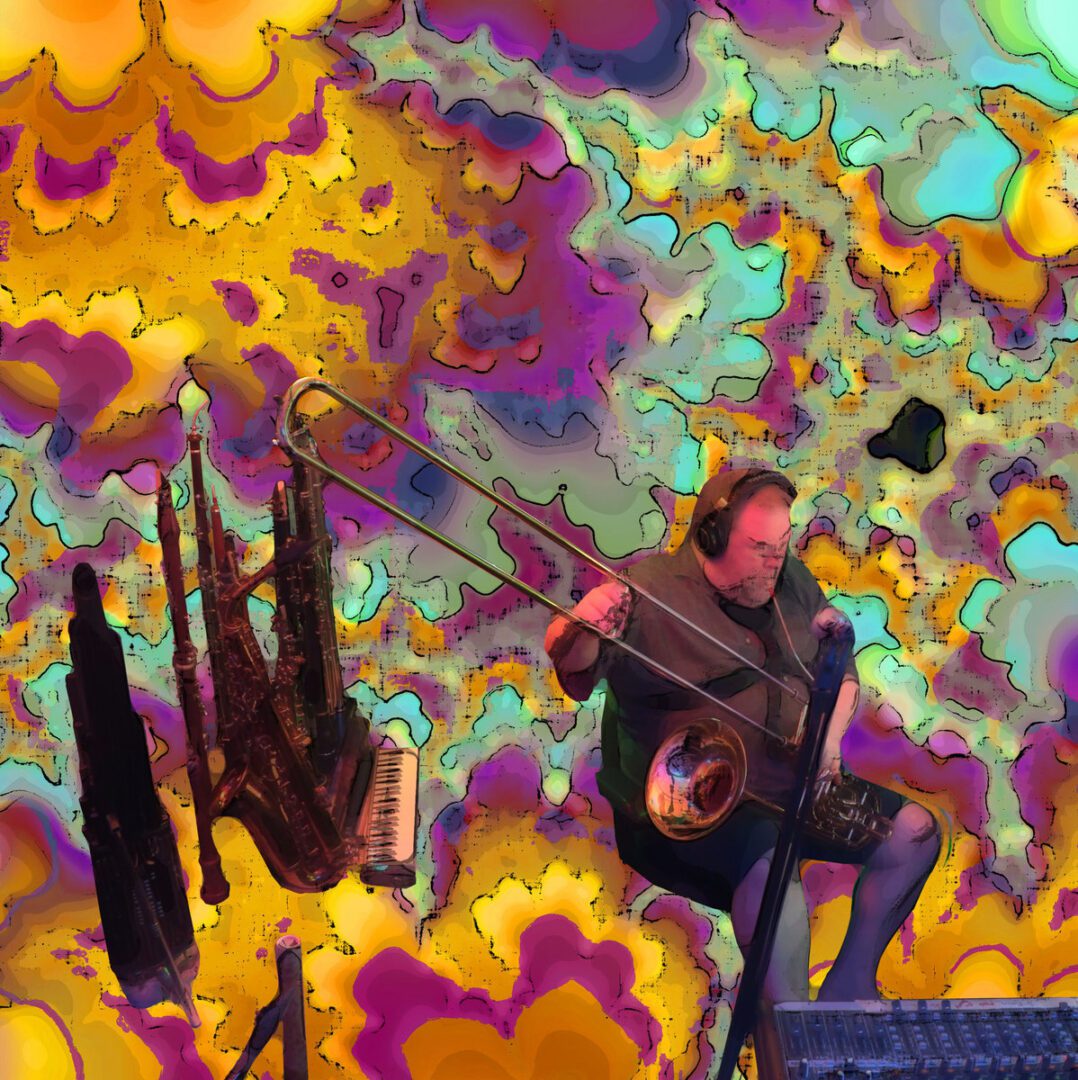
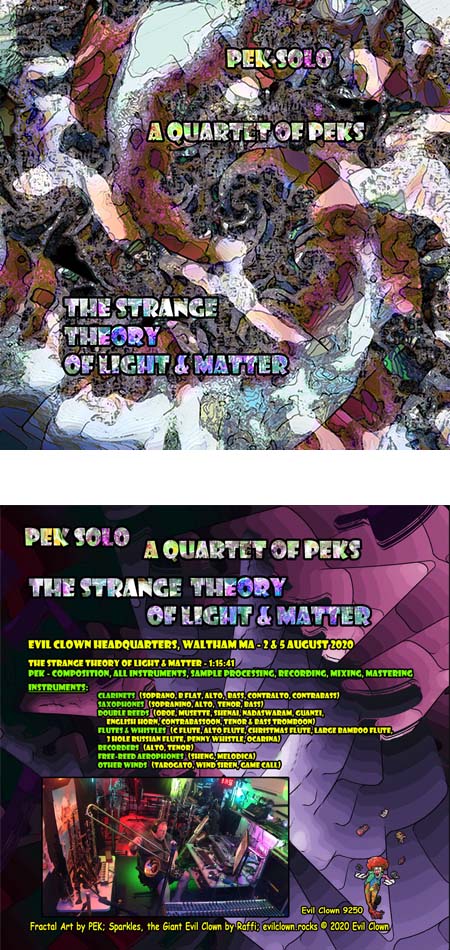
The Strange Theory of Light & Matter:
PEK Solo, A Quartet of PEKs
Evil Clown Headquarters, Waltham MA – August 3, 5, 6 2020
1) The Strange Theory of Light & Matter 1:15:41
PEK – Composition, all instruments, recording, mixing, mastering
Clarinets (Soprano, b flat, alto, bass, contralto, contrabass)
Saxophones (sopranino, alto, tenor, bass)
Double Reeds (oboe, musette, shenai, nadaswaram, guanzi, english horn, contrabassoon, tenor & bass tromboon)
Flutes & Whistles (C flute, alto flute, Christmas flute, large bamboo flute, 3 hole Russian flute, penny whistle, Ocarina)
Recorders (alto, tenor)
Free-reed aerophones (sheng, melodica)
Other Winds (tarogato, wind siren, game call)
Bandcamp | Squidco | YouTube | Soundcloud
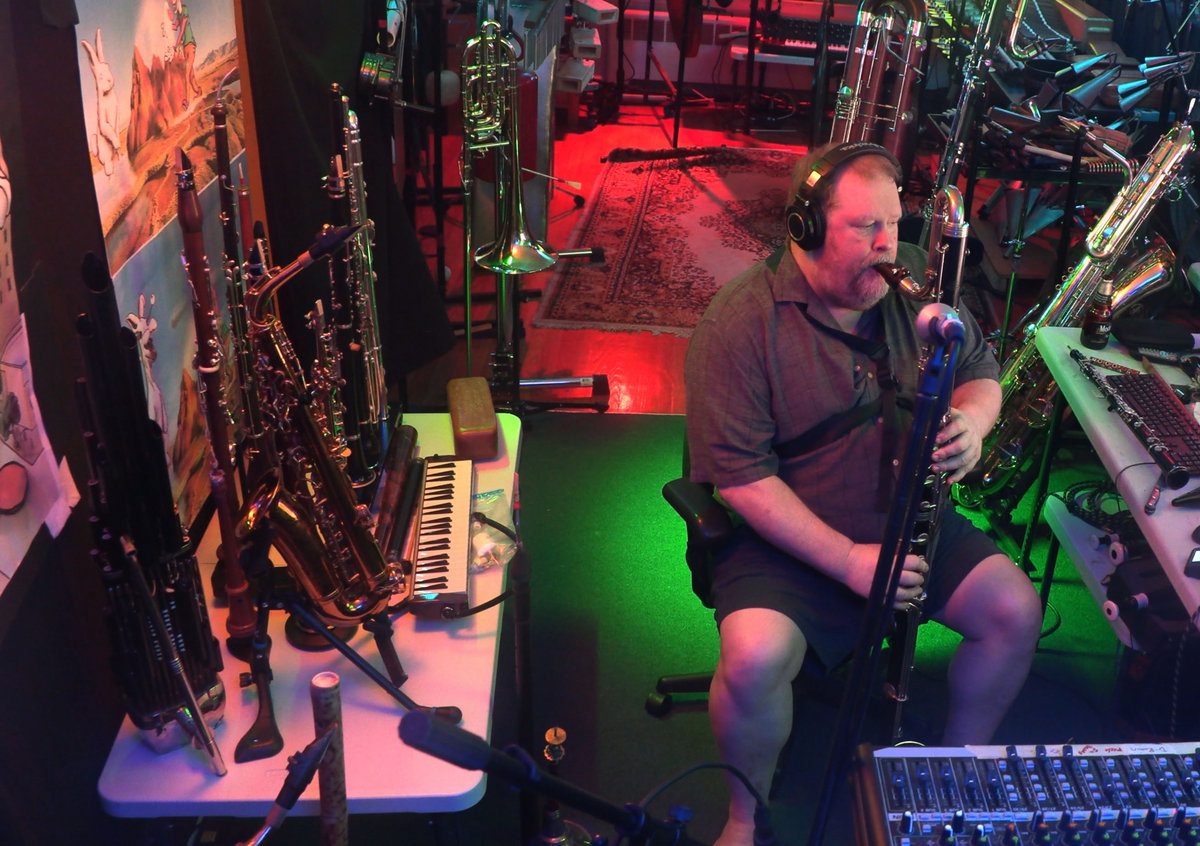

What hath coronavirus wrought? In relative isolation, mad wizard of improvisation Dave Peck, (PEK), found himself refracting inwardly, becoming, in a way, a living and self-contained realisation of the fractal artwork gracing the covers of Leap of Faith albums. The first of now a half-dozen PEK quartet albums, The Strange Theory of Light & Matter kicked off a series of multi-track improvisations that have grown new sub-sets of musics for both quartet and orchestral self-groupings, all instruments performed by PEK.
Here’s what the construction of a piece like “The Strange Theory of Light & Matter” looks like: The individual tracks are album-length improvisations, as he writes, “Each PEK plays the complete duration, while listening to the previous tracks.” Thus, the fractal-like self-spawning nature of the project, with improv 1 leading to improv 2×1 which becomes 3x(2×1) and finally there’s 4x(3x(2×1). True to its internal math, the instrumentation spread across the four tracks includes over 30 instruments:
- Clarinets (soprano, b flat, alto, bass, contralto, contrabass)
- Saxophones (sopranino, alto, tenor, bass)
- Double reeds (oboe, musette, shenai, nadaswaram, guanzi, English horn, contrabassoon, tenor & bass tromboon)
- Flutes & whistles (C flute, alto flute, Christmas flute, large bamboo flute, 3 hole Russian flute, penny whistle, Ocarina)
- Recorders (alto, tenor)
- Free-reed aerophones (sheng, melodica)
- Other winds (tarogato, wind siren, game call)
How to approach the results? Personally, the sections featuring the double reeds like musette and English horn, and assorted recorders are among the most engaging. Like Peter Brötzmann, PEK makes the tarogato absolutely sing, and the musicality of interlaid improvisations are occasionally difficult and often gorgeous. Truly, listening to this is not unlike some classic AACM woodwinds recordings, like Roscoe Mitchell’s “Nonaah” quartet with Joseph Jarman, Henry Theadgill, and Wallace McMillan; Anthony Braxton’s “Composition 76” recorded with Threadgill and Douglas Ewart, and again with Mitchell and Jarman; and even Threadgill’s X-75 ensemble, with Ewart, Jarman, and McMillan (plus four basses and vocals). Similar to these other compositions, “The Strange Theory of Light & Matter” displays its own internal logic structure, with sets of material bent through layers of improvised (re-)interpretation. Conceptually, it’s a high-wire act, with some beautiful sections of harmonized flutes and whistles and long melodic lines that take some time to reveal their shape.
As mentioned, The Strange Theory of Light & Matter is merely the opening to the new world of PEK quartets. From the woodwinds-focused Schematic Abstractions for the Clarinet Family , Fixed Intentions for the Saxophone Family , and Completeness for Flutes and Double Reeds , to the broad palettes (including string, electronics, and percussion) of Unifications and Strange Beauty Out of Chaos , PEK is pushing the possibility of the self-contained quartet to some outer limits.
All albums are available via Bandcamp.
Lee Rice Epstein, FreeJazzBlog
Bruce Lee Gallanter Review
PEK SOLO – A Quartet of PEKs / The Strange Theory of Light & Matter (Evil Clown 9250; USA) Featuring PEK on clarinets, saxes, double reeds, flutes, whistles, recorders and other wind instruments. Ever since the pandemic forced everyone inside (March of 2020) for months on end, everyone has had to adjust to new ways of dealing with life. Dave Peck a/k/a PEK is the longtime fearless leader & founder of Leap of Faith and their 1/2 dozen plus offshoot bands. What was amazing is how many live and recorded sessions he has organized with some 100+ discs out on his own Evil Clown label. Due to the pandemic and the precariousness of life, PEK has had to cancel practically every Leap of Faith gig except for a handful of sets recorded at his own abode, the Evil Clown Headquarters in Waltham, MA. Hence, most of the most recent Evil Clown releases are PEK solo offerings. I spoke with Mr. Peck on the phone recently and he says that with his extra time, he is learning to work wonders in his own studio by layering or overdubbing as he records so we can hear a few different instruments at the same time as he adds select lines to his ongoing sessions. For this sessions, PEK, who usually plays upwards of 50 instruments, concentrates on reeds and brass only, something he hasn’t done before as far as his recorded catalogue. Right from the first note, PEK is layering several reeds and double reeds together. I really like the way the clarinets (bass, b-flat & contrabass) clarinets sound together as PEK weaves his lines around one another in complex, twisted harmonies. PEK does a fine job of stretching out lines, bending certain notes, adding & subtracting different parts or layers as he goes. While PEK takes an occasional solo (bass sax or one of several clarinets), he also adds different parts selectively by overdubbing or sampling as he goes. This disc is pretty long at nearly 76 minutes so do take some time to listen to the entire endeavor. Yet another impressive undertaking by the ever-resourceful Mr. PEK.
Bruce Lee Gallanter, Downtown Music Gallery


Liner Notes by PEK
Every once in a while, there is a break in the crazy schedule here at Evil Clown and I have some time to do a solo album. Our grand olde pal, the Corona Virus has provided such a break in spades…. At the beginning of the year, it appeared that the year would be our busiest yet… We did a bunch of albums in January, February and the first weeks of March, and then I was forced to cancel a bunch of wonderful performances scheduled for the months that followed. So, I caught up all my old business: web site, social media, distribution, and the other non-musical activity required to drive the enterprise. Then I took a month off… my biggest rest since I started up in 2015 after my long hiatus. In mid-May I started up again, conceiving some new means of producing some of the enormous output normally achieved by Evil Clown.
I did some solo performances in the 90s period which presented a few interesting problems since I like to perform in a very long format with many instrument changes. So, I developed a few techniques for continuing the improvisations across instrument changes. Since the Evil Clown reboot in 2015, some of my solo albums have used these methods, but most of them have involved the construction of a mix of electronically processed samples. The samples are made from excerpts of performances by the various Evil Clown Ensembles and some specially recorded in the studio. The mix is completed before the solo track is added and then I make decisions in real time during the improvisation regarding whether to include the sample track or not, and if present, how loud it is relative to the solo. This was a satisfying way to meet my aesthetic intent to make all the decisions in real time – a key element of my Pure Improvisation aesthetic. I also have used similarly prepared mixes as accompaniment tracks for Metal Chaos Ensemble, Mekaniks and other Evil Clown Ensembles.
The shear amount of time made available by not working with other musicians presented opportunity for a different approach to solo records. I decided to leverage compositional concepts used in preparing my graphic scores for the Leap of Faith Orchestra. The scores layout long (75 minutes) forms using simple symbols, and English language direction on a timeline and then the orchestra interprets the directions with the aid of a large sports clock. The result is a sequence of sonorities (textures) resulting from the interpretation. The score is meant to address a fundamental problem of improvisations by large ensembles where the tendency is to produce a wall of sound with insufficient development. The resulting work is both compositional and yet fully improvised, since no melodic, harmonic or rhythmic details are specified.
The last two PEK Solo albums, Schisms and Some Truths are Known, explore adapting these orchestral ideas to compositions constructed in the studio… Some Truths are Known is an epic 4 hour work in three 80 minute movements where I use 110 different instruments. These pieces are wonderful soundscapes which move across a wide variety of sonorities, but take a great deal of work compared to the standard Evil Clown method of recording live to 2-track… For Strange Theory of Light & Matter, I decided to do something completely different. This piece is for 4 PEKs. Each PEK plays the complete duration, while listening to the previous tracks… More like how a rock record is typically prepared than my usual processes. The other big change is that I’m using only wind instruments and not the percussion, electronics and strings of Some Truths… This method allows relatively rapid production of the work, while the overdubbing permits a facsimile of normal ensemble interactions, but between PEKs. Look ahead to more solo work in each of these categories (An Orchestra of PEKs, A Quartet of PEKs) as well as some more conventional solo efforts with no overdubbing or studio construction.
Until the stupid virus is over and more normal interactions are possible with other people, Evil Clown will continue to create new works… PEK Solo projects, and a very select number of Leap of Faith or Metal Chaos Ensemble sets involving no more than 3 people. As usual, the chaos of the universe throws problems which require our attention. Expression must be expressed. Music must be made. The chaos of the universe requires it.
PEK – 8/9/2020
Video Screen Grabs
